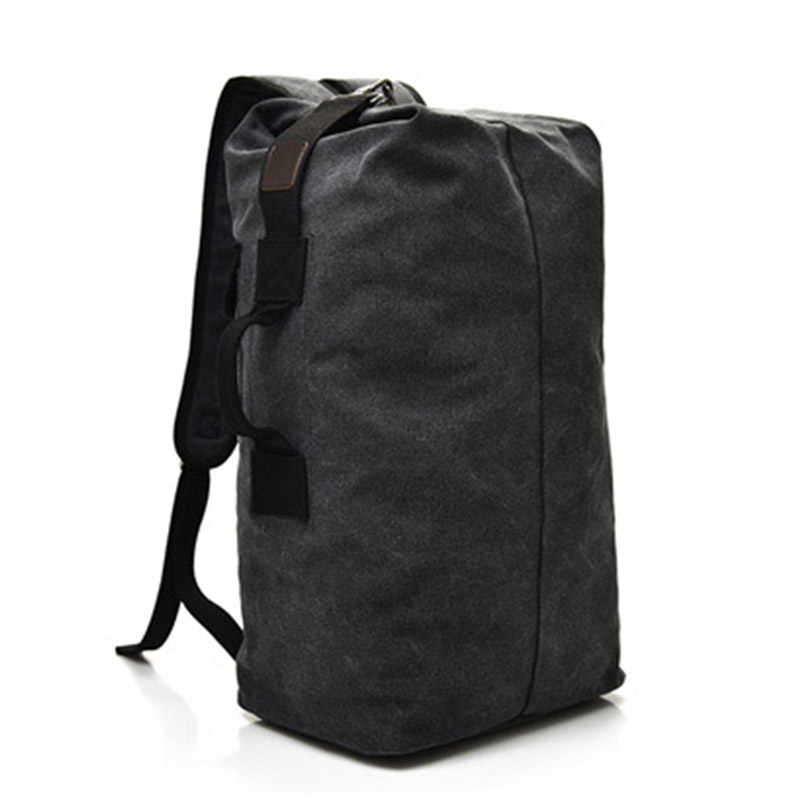I thought I had seen the most epic waterfall in the world already when I was in Zambia, visiting Victoria Falls, and there was no way any waterfall could top that. However, when I arrived at Iguazu Falls, I was blown away by its sheer beauty.
While Victoria Falls has the title of the largest waterfall in the world based on its combined width, Iguazu Falls is in a league of its own, earning the title of the largest waterfall system in the world, with several massive waterfalls all concentrated in this one area.
To witness nature at its finest, seeing the Iguazu Falls for the first time is a must. No trip to South America would be complete without visiting the Iguazu Falls. To achieve this, here is a comprehensive backpacking guide that provides everything you need to know for visiting the falls from both the Argentinean and Brazilian sides.
Looking for a complete guide to Chile and Argentina?2 Months Argentina & Chile Itinerary
Table of Contents
Iguazu Falls Itinerary Map
Quick Summary: 3 Days Backpacking Iguazu Falls Itinerary
3 Days Iguazu Falls ItineraryDay 1: Visit Cataratas del Iguazu
Lower Circuit of Iguazu Falls
Upper Circuit of Iguazu Falls
Devil’s Throat Circuit
Day 2: Visit Cataratas do Iguaçu
Walk from Trilha das Cataratas to the Base of Devil’s Throat
Go up the Espaco Naipi
Day 3: Relax or Go on a Helicopter Tour in Puerto Iguazu
More Iguazu Falls Activities
Where to Stay in Iguazu Falls?
Argentina Video
When to Visit Iguazu Falls?
How to Get to Iguazu Falls?
Transportation Around Iguazu Falls
Iguazu Falls Entrance Tickets
Which tourist SIM card is best for Argentina?
What to Pack for Iguazu Falls?
Further Reading for Argentina
[Show More]
Iguazu Falls Itinerary Map
Quick Summary: 3 Days Backpacking Iguazu Falls Itinerary
Planning to visit soon?
🛌 Booking hotels: Booking.com, Agoda, and Hostelworld.
Hostel Park Iguazu (Budget)
Hotel Yvera Cataratas (Mid-Range) 👍 Top Pick
O2 Hotel Iguazu (High-End)
🏄 Booking tours:
Viator, GetYourGuide, and Klook.
Full Day Iguassu Falls Both Sides – Brazil and Argentina (8 hours)Iguazu Falls Tour, Boat Ride, Train, Safari Truck (9 hours)Full-Day Tour to Iguazu Falls (10 hours)
🚘 Renting a car: Discover Cars.
🏥 Travel Insurance: Heymondo. Get 5% off today!
3 Days Iguazu Falls Itinerary
If you are wondering which side of the Iguazu Falls is better, Brazilian or Argentinian, I can tell you right now that the Argentinian side of the Iguazu Falls is the best one. And if you only have a day to explore, go with Argentina.
So on our first day at Iguazu Falls, start your day as early as you can (7 AM) and head over to the Puerto Iguazu bus terminal. Buy a ticket to Iguazu Falls from the many kiosks nearby, making sure that you are buying the one to “Cataratas del Iguazu” and not the one going to the Brazilian side (Foz do Iguaçu, etc.).
Depending on how crowded it is that morning, you might need to wait for 30 minutes or more to get on the bus. Once you are on the bus, it will take around 20 minutes to get to the Visitor’s Center where you can buy the ticket and grab a free map for the park.
No time to read?
Don’t worry. You can save this page to Pinterest and come back later.
There are several trails you can walk, and since we have a full day here, I would recommend that you do them all.
Lower Circuit of Iguazu Falls
Right out of the gate, we go east following the Lower Circuit route (Circuito Inferior). As you walk down the stairs, you will get a glimpse of the Garganta del Diablo or Devil’s Throat, a giant U-shaped cascade as powerful as its name that you will visit at the end.
This route is approximately 1.7km long and loops along the side of the cliff, offering a sweeping view of all the waterfalls in the area.
Halfway through the trail, you will find a long queue of people waiting to get on one of the boats that go along the river to the cascade. If you want to see the waterfall up close from the bottom, you can either buy a ticket and take this boat or do as I did and go on foot on the Brazilian side the next day.
The trail should loop back north towards a lighthouse. Along the way, you will find a few other waterfalls amidst the rich, green tropical forest that are no less impressive than the main cascade.
Once you are at an intersection, instead of going back the same way, you can head west towards the lighthouse and start the next trail: the Upper Circuit.
Upper Circuit of Iguazu Falls
The Upper Circuit (Circuito Superior) is yet another beautiful 1.7 km walking trail that takes you along the Rio Iguazu river, providing a view of the cascade from above.
At the lighthouse, continue west until reaching a T-intersection, then turn left on the walkway that goes above the river. Along the way, you might see some coatis out and about. Do not feed or pet them, as they will bite, and their sharp teeth are no joke.
Once you have reached the viewpoint, you can head back the same way to the T intersection you have previously passed. Instead of going back the same way, go west, and you will arrive at the Estacion Catalatas train station.
Devil’s Throat Circuit
Here you have two options: you can either take the train to the Devil’s Throat viewpoint or do as I did and walk the whole length. If you want to take the train, you will have to get a ticket and wait in line (the queue was very long when I was there).
If you want to walk, simply continue along the trail and follow the railway until you arrive at the Estacion Garganta train station. It should take you around 30-45 minutes to walk the entire length.
From the train station, continue on the over-water walkway to see the Devil’s Throat in person. The amount of water that moves here is astounding; no wonder they call it the Devil’s Throat.
One tip I have for you here, if you want to get a photo of the Devil’s Throat without the people, is to visit the gated section where a commercial photographer is set up right on the walkway facing the Devil’s Throat. They will take a photo of you, and you will have to pay them to obtain the photo.
Tell them that you want a photo, and once they have taken your photo with their cameras, ask them to take one with yours. Don’t show up to get their photos. Now, you have a memorable photo of yourself and the falls without any people. Boom!
With all the walks you can do, it will probably take an entire day to see them all. Once you are done with the Argentinean side, it’s time to explore what the Brazilian side has to offer.
Day 2: Visit Cataratas do Iguaçu (Brazilian Side)
Even though I said that the Argentinean side is better than the Brazilian side, there are still places the Brazilian side can offer that the Argentinean side cannot, such as an up-close experience with the waterfall.
The next day, you can take a bus from the same bus terminal, cross the border to Brazil, and you should arrive at the park entrance in less than an hour. You can buy an entrance ticket with a credit card via a ticketing machine, so you don’t have to wait in line. Once you have entered the park, get on a free bus within the park.
There are several rest areas you can drop by, but the one that is right by the waterfall is the Trilha das Cataratas or the end of the line. I would recommend that you get off at Trilha das Cataratas and walk to the end.
Walk from Trilha das Cataratas to the Base of Devil’s Throat
From the Trilha das Cataratas, you will get a glimpse of the cascade from the other side of the river. The view from here definitely has a more epic feel than on the Argentinian side.
On the Brazilian side, an elevated walkway has been built directly onto the river, which extends almost to the edge of the cascade. Prepare to get soaked as you will be walking near the Santa Maria waterfall, and the amount of water the waterfall creates when it splashes down gives a feeling as if it is raining.
Go up the Espaco Naipi (Naipi Space)
After you are done, you can walk up to the Espaço Naipi viewpoint to get the whole perspective of Iguazu Falls and the architectural wonder that is the walkway they have built.
From Espaço Naipi, you will also be able to experience the powerful Santa Maria Waterfall up close, from a different perspective, with three levels of viewing decks. From here, you can capture a beautiful panoramic view of the Brazilian side of the Iguazu Falls.
Once that is done, you can either spend some time exploring other bus stops (every bus stop has an attraction for you to kill time in the park) or take the bus back to the entrance and wait for the bus to return to Puerto Iguazu in Argentina.
Day 3: Relax or Go on a Helicopter Tour in Puerto Iguazu
Photos by Qwesy Qwesy
On your last day in Puerto Iguazu, you can either relax in one of the many hotels equipped with a pool, as the humidity is probably getting to you by this point, or go on an epic helicopter tour to experience the Iguazu Falls from above.
For a 10-minute ride, it’s approximately $275 USD per person. It may be expensive, but there is no better way to truly grasp the scale of Iguazu Falls than by looking at it from an aerial vantage point.
Looking for a helicopter tour from Puerto Iguazu? Take a helicopter ride over the Iguazu Falls tour.
First time in South America? Check out:20 Best Places to Visit in South America
More Iguazu Falls Activities
Where to Stay in Iguazu Falls?
Let’s be real, the Argentinean side of Iguazu Falls is better than either Paraguay’s or the Brazilian side, so I would recommend staying on the Argentinean side instead. Here are great recommendations for where to stay near Iguazu Falls on the Argentinean side:
Argentina Video
Watch it on Youtube
When to Visit Iguazu Falls?
Visiting during February and March is recommended, with the water level still quite high and the sky clear. Be warned that it will be humid during this time, but you will cool off quickly from the spray of the waterfall when you are face-to-face with the falls.
How to Get to Iguazu Falls?
First, you will have to get yourself to Buenos Aires. There are several airlines that fly to Buenos Aires, such as American, United, and LATAM if you are coming from the US, and Turkish, Air France, or Lufthansa Airlines if you are coming from Europe or Asia.
The best way to find the cheapest flight is to use a combination of Skyscanner and Expedia to get the latest and cheapest deals that fit your itinerary.
The fastest way to get to Iguazu Falls from Buenos Aires is by flying into Cataratas del Iguazú International Airport via either Aerolineas Argentinas or LATAM Airlines Group.
You can also take an overnight bus to Puerto Iguazu from Buenos Aires if you want to save costs. There are several bus companies to choose from, such as Expreso Singer, Crucero del Norte, and Tiger Iguazu. Buses leave in the afternoon (1 PM – 3 PM) and often arrive in the morning. It’s an 18-hour bus ride and should cost you around 70 USD per trip.
If you are taking the bus, you can browse through and buy the tickets online from BusBud.com.
Transportation Around Iguazu Falls
Puerto Iguazú is 20 km away from the Visitor Center to Cataratas del Iguazú (Argentinian side). There are several buses leaving from Puerto Iguazú Bus Station every 15-30 minutes from 7 AM to 7 PM. Be sure to go there early, as it is often full.
You can buy the ticket right at the terminal 30 minutes before your planned departure time, and it should cost around 130 ARS for one way.
To get to Cataratas do Iguaçu (Brazilian Side) from Puerto Iguazu, you can take the Crucero del Norte or Rio Uruguay buses from the same terminal, and it will take around an hour (depending on the queue at immigration) to reach the entrance.
It runs every hour, and tickets can be bought directly from the terminal just before you leave. The bus should cost around 130 ARS one way.
Iguazu Falls Entrance Tickets
For the Argentine side, the entrance ticket to Iguazu Falls is 10000 ARS (35 USD) per person as of 2023, and you can buy it from the Visitor Center using either cash (Argentine Pesos only) or credit cards.
For the Brazilian side, the entrance ticket to Iguazu Falls is (25 USD) per person as of 2023, and you can buy it either online from the Iguazu Official Website or at the entrance using cash or credit cards.
Tips: It’s best to avoid paying in the local currency for park tickets to avoid terrible rates at the border. Instead, go with credit cards, especially if you’re only planning to visit the Brazilian side for a day.
Daily Budget
Traveling here will typically cost you more than visiting most other countries. You can expect to spend around $45 – $65 USD per day per person, including food, accommodation, and transportation.
Please keep in mind that these are suggested daily budgets based on my own style of travel, which leans more towards the budget side of things. If you aim to stick to this budget, anticipate sleeping in dormitories, dining out only occasionally, and being comfortable with the cheapest and most convenient modes of transportation, which often involve a considerable amount of walking.
Which tourist SIM card is best for Argentina?
Update: If your phone supports eSIM, I highly recommend checking out Airalo, a global eSIM marketplace. It allows you to stay connected affordably while traveling in Iguazu Falls, Argentina without having to switch out your physical SIM card.
Gone are the days when you needed to scramble to find a local SIM card at an airport upon arrival. You can purchase an eSIM before your arrival, and you’ll be good to go. If your phone doesn’t support eSIM, here is how you can get a local SIM card in Iguazu Falls, Argentina:
Wifi in Puerto Iguazu is good enough, but if you would like to be connected to Iguazu National Park, you can buy a local SIM card from Claro. There are not a whole lot of options for tourists from them, with an “unlimited” data package capped at 50 MB per day, but they have good coverage around this area and in Patagonia if you are planning to go there too.
For more information on SIM cards in Argentina and Brazil: Argentina Prepaid Data SIM Card | Brazil Prepaid Data SIM Card.
Tips: To stay connected with people at home, be sure that you have a VPN, such as ProtonVPN, installed before traveling. It’s FREE, and you can gain access to services that may be blocked in certain countries.
What to Pack for Iguazu Falls?
Prepare Water and Lunch: If you want to avoid paying for an expensive lunch in the park, prepare your own lunch the day before. Also, be sure to carry enough water for the rest of the day, as Iguazu is very humid and you will be walking a lot. Some parts are not covered in shade, so stay hydrated! I always carry my 2-liter hydration pack, which I recommend so you don’t have to stop to stay hydrated.
Rain Cover for Your Bag: If you are carrying a daypack, make sure you have a rain cover with you, as you will get soaked every now and then by the spray from the waterfall, especially the one on the Brazilian side.
Rain Jacket or Poncho: You will get wet. There’s no avoiding it, so if you want to keep your clothes dry, be sure to bring a rain jacket with you for the trip. Here is a jacket I recommend for the trip: the beautiful orange Columbia outer-shell jacket.
Waterproof Pack: For valuable items such as your phone, wallet, and passport (which you will need to cross the border), just in case the sprays get into your bag.
Be careful with your camera: Most modern cameras are weatherproof to some extent, but the fine spray from the waterfall can mess up the electronics. So, be very careful when you want to take photos. Also, watch out for the wind as it might bring water from elsewhere to you.
Further Reading for Argentina
I hope you found this Argentina travel guide useful. If you are looking for more information about traveling in Argentina, be sure to check out the articles below.
Looking for a complete travel guide for Chile and Argentina? Here’s a 2-month itinerary for Chile and Argentina.
Looking for a complete backpacking guide to the entire South America continent? Here is the ultimate 6-Month Backpacking Itinerary for South America.
First time in South America? Check out the 20 Best Places to Visit in South America.
Packing for a trip to visit South America can be extremely daunting. Here’s a packing guide to help you: What to Pack for South America.
If you want to visit Patagonia, here’s a 2-week Patagonia itinerary for hikers and backpackers.
You can also watch my Argentina travel video here: “Terra Argentina” travel video.
To see all articles about Argentina, visit the Argentina Travel Guide page.
Looking for a place to go after Argentina? How about Chile or Bolivia?
Looking for more travel guides for South America? You can find more on my South America Travel Guide page.
For more of my travel guides, visit my Destinations page.









